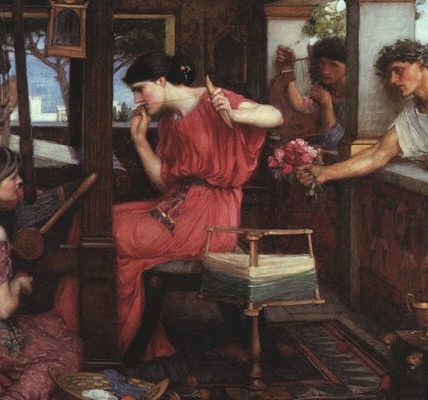The Phoenician Scheme: a fun watch even though it’s the same journey in a different vehicle
As someone attuned to the distinct styles of auteur filmmakers, I came to Wes Anderson’s latest offering The Phoenician Scheme intrigued, feeling a mix of distance and familiarity.
My appreciation for other auteur directors like Stanley Kubrick, Spike Lee and Alfred Hitchcock may have sometimes inadvertently pushed Anderson’s work to the periphery of my viewing habits, but The Phoenician Scheme (his 13th directorial film) provides an opportunity to reassess that omission.
The cinematic trademarks were all there: deadpan performances, meticulous symmetry, whip-pan camera work (when the camera whips round so fast, everything blurs), ice-cream colour palettes and trains, frequently present in some form throughout Anderson’s
filmography.
Looking for something good? Cut through the noise with a carefully curated selection of the latest releases, live events and exhibitions, straight to your inbox every fortnight, on Fridays. Sign up here.
And a Bill Murray cameo? Of course – along with other minor roles from Tom Hanks, Bryan Cranston, Scarlett Johansson, Richard Ayoade, Riz Ahmed and Benedict Cumberbatch (as well as many others), all appearing briefly across the film’s brisk 90-minute runtime – a fairly typical length for an Anderson feature.
Although I found The Phoenician Scheme a fairly enjoyable film and one that ardent fans will surely embrace, my issue was perhaps precisely within the formulaic nature of this work. This sense of familiarity makes the viewing simultaneously comfortable, but also a little predictable.
Aside from a genuinely unexpected explosion in the film’s opening moments, there was little that caught me off guard, making it difficult to gauge just how memorable The Phoenician Scheme will be in the long run. It entertains but rarely surprises and despite the litany of cameos, each one is fairly unmemorable. In fact, while writing this, I’ve only just remembered that Willem Dafoe is in a scene or two as well.
It’s not that anyone is necessarily giving a bad performance but rather each iteration of wry whimsy results in a kind of stylistic uniformity that renders them indistinct from one another. By contrast, the film’s three leading roles benefit from sustained screen time, allowing for a little more nuance.
Benicio del Toro leads the cast as Zsa-Zsa Korda, a rich and morally ambiguous industrialist, set within the fictional Middle Eastern nation of Phoenicia during the 1950s. Korda is on the point of political and personal ruin. His life is constantly in danger with ongoing visual and verbal gags from the beginning about his nonchalance towards assassination.
Korda faces execution threats from shadowy agencies and members of his own board to the extent that his suspiciousness has become a comfortable characteristic. Newcomer Mia Threapleton (daughter of Kate Winslet) stars as Liesl Korda, his estranged daughter who has spent years in quiet devotion as a nun in a remote convent.
Her sudden appointment as her father’s heir thrusts her back into a world she had long abandoned, continuing Anderson’s other fascination with fractured, complex familial dynamics, as the rest of her siblings look on. Michael Cera portrays Bjorn Lund, a docile yet quietly astute tutor with a fascination for insects, who is brought in to help Liesl adjust to her new responsibilities.
Without revealing too much, Lund turns out to be more than he initially seems, giving Cera the chance to slip back into that awkward, mock-cool persona –reminiscent of his Twin Peaks: The Return role, in which he channels a Marlon Brando–style rebel straight out of The Wild One.
In typical Anderson style, visual gags (here in the form of props) propel the film along, from Lund’s bugs to Liesl’s jewel-encrusted rosary and Korda’s weapons, which include grenades that he politely offers to other diplomats as a formal greeting.
The visually rich and symmetrical arrangement of characters, against a static or sideways moving camera reminded me of how much Anderson is inspired by Peter Greenaway’s work, particularly The Cook, the Thief, His Wife & Her Lover (1989).
Anderson draws on this auteur aesthetically and thematically but also through absurdity. While Greenaway’s films take inspiration from canvas painting, the closing credit sequence of The Phoenician Scheme also features well known artworks, serving as inspiration for the content.
The visuals, which are rich throughout, are also interestingly compacted to a 1.50 aspect ratio, making the frame of the screen quite box like. This is perhaps also relevant to the structure of the film in which most of the events and visitations of external characters are pre-organised into a range of numbered shoeboxes, which is afforded a lengthy sequence, with plenty of overview shots of the boxes neatly arranged.
Each section of the film that follows pertains to a certain box. Viewers are reminded as to which box they are in through a range of title cards which divides the film into a series of vignettes, not unlike Anderson’s chapter structure in The Royal Tenenbaums.
This earlier film is perhaps his better-known one about the estrangement and reconnection of dysfunctional family members. This trait can also be found in The Darjeeling Limited aboard a train, or in a submarine in The Life Aquatic with Steve Zissou. The Phoenician Scheme echoes these familiar tropes (domestic dysfunction wrapped in whimsical packaging) aboard a number of private plane journeys (with a token train scene in the middle).
While it may feel like a familiar journey aboard a new vessel, that familiarity will probably be either the reason you enjoy the ride – or the very thing that makes it feel like an exhausting commute, one where you’re tempted to pull the emergency cord.
While there is much to enjoy, I doubt The Phoenician Scheme will be remembered as one of Anderson’s most essential works. At times, it teeters on the edge of parodying its own auteur style. Despite this I found it compelling enough to spark a renewed interest in his earlier films.
And any work that can reignite curiosity, even while treading familiar ground, is worth your time, even if it’s only for a chance to play cameo bingo.
Daniel O’Brien does not work for, consult, own shares in or receive funding from any company or organisation that would benefit from this article, and has disclosed no relevant affiliations beyond their academic appointment.


